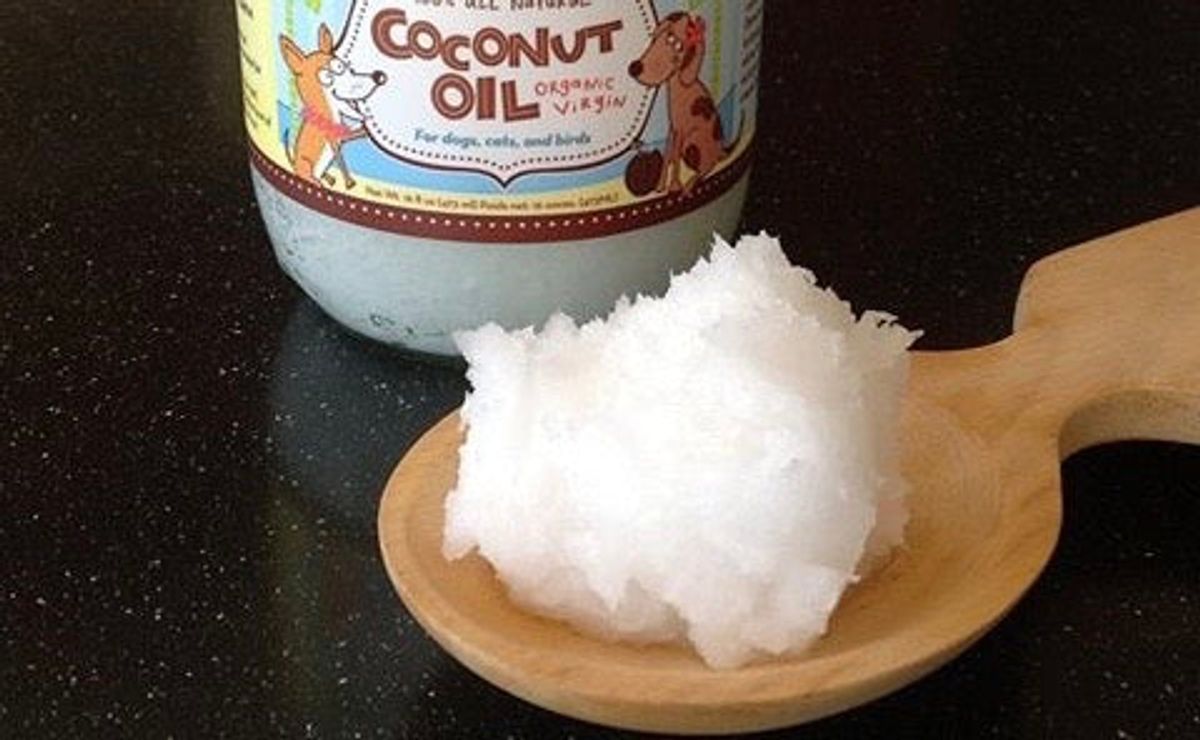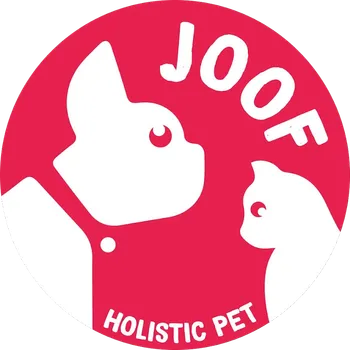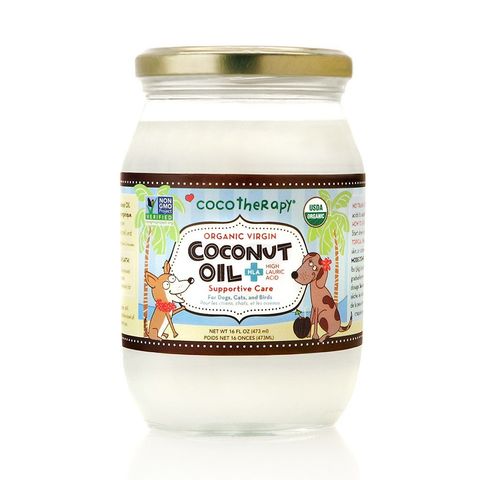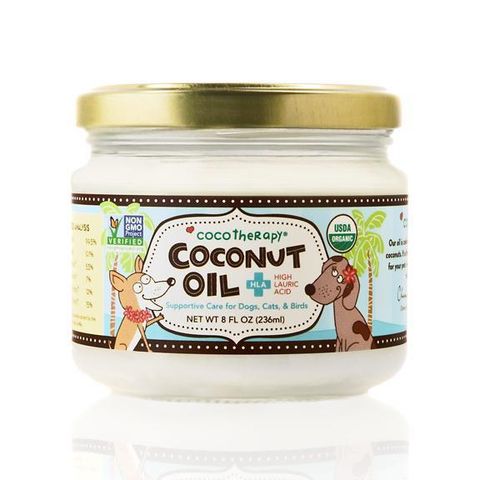
Recommended Article #30January23
Hi, Pet Parents Resources is a platform, where we share with you, what we research as pet parents ourselves. Here, we curate and give, what we hope would be, interesting to important informative articles, videos and even podcasts from our brand creators, experts, researchers, and more all over the world, to aid you in making better choices for your pets.
This recommended article "The Lauric Acid Debate: Is it a LCFA or MCFA? Is it Good for you, or Bad for you?" is curated and sourced from CocoTherapy. If you loved this article, please do feel free to share it around.
The Lauric Acid Debate: Is it a LCFA or MCFA? Is it Good for you, or Bad for you?
The most prevalent medium-chain fatty acid (MCFA) in virgin coconut oil is lauric acid. It is a strong "super ingredient" that offers a variety of health advantages to pets, including the power to boost the immune system, protect the skin and coat, and keep the gastrointestinal tract healthy. However, despite being such a beneficial ingredient, there is debate over lauric acid in coconut oil.
In this article, we'll examine the lauric acid controversy and dispel some myths. Let's go into great detail about the body's MCFA metabolism.
What's the Difference Between LCFAs, MCFAs, & SCFAs?
Long-chain, medium-chain, and short-chain fatty acids are the three main types of saturated fatty acids. The properties of the fatty acid and its impact on health are determined by the length of the fatty acid's carbon chain and the level of hydrogen saturation.
Palmitic acid (C:16), myristic acid (C:14), and stearic acid (C:18) are the long-chain, saturated fatty acids included in coconut oil. LCFAs are larger fat molecules than MCFAs due to their longer carbon chains, and they require a longer and more complex metabolic process than MCFAs. This means that they put more strain on the digestive system and internal organs like the liver and pancreas, necessitating the breakdown of pancreatic lipase and biliary acids into usable energy.
When consumed in excess, LCFAs can increase the risk of health issues like obesity and heart disease since they are frequently stored as fat. Other sources of long-chain fatty acids include fish oil, animal fats, dairy fats, sunflower, flaxseed, avocado, and olive oils.
Medium-chain fatty acids (MCFAs) have chains of 6-12 carbon atoms. Lauric acid (C:12), capric acid (C:10), caprylic acid (C:8), and caproic acid (C:6) are some of the most common MCFAs in this group. These fatty acids do not increase the risk of cardiovascular disease, in comparison to palmitic and myristic acids. Because of how the body processes them, they have actually been shown to improve general health. Virgin coconut oil and breast milk are the richest sources of MCFAs.
Less than 6 carbon atoms are found in short-chain fatty acids (SCFAs). The most common ones include butyric acid (4 carbon atoms long), propionic acid (3 carbon atoms long), and acetic acid (2 carbon atoms long). SCFAs are the end products of intestinal microbial fermentation of fiber. This indicates that they are mostly created by the body, as compared to LCFAs and MCFAs. SCFAs have a significant role to play in promoting gut health, according to research. Additionally, they are believed to improve general health and lower the risk of inflammatory illnesses like diabetes, heart disease, and obesity.
Is Lauric Acid a MCFA or LCFA?
Lauric acid (C:12), according to some, actually "functions" as an LCFA and uses the same metabolic pathways as long-chain triglycerides despite its chemical composition. This implies that, like an LCFA, lauric acid must be broken by pancreatic lipase before being transported by chylomicrons, a low-density lipoprotein, through the lymphatic system and to other organs in the body. However, this couldn’t be further from the truth.
The truth is that lauric acid (also known as dodecanoic acid) is a saturated fat with a 12-carbon atom chain. It is classified as a MCFA, has many properties of medium-chain fatty acids, and as we’ll show you in various studies below, the body metabolizes lauric acid as a MCFA. The most abundant natural source of lauric acid is virgin coconut oil (which has an average of 50% lauric acid). Human breast milk is the only other abundant source found in nature.
A 2014 study published in the Philippine Journal of Science sheds further light on the unique properties of lauric acid. According to lead researcher Dr. Fabian M. Dayrit,
"Based on biochemical and nutritional evidences, lauric acid (C12) has distinctive properties that are not shared with longer-chain saturated fatty acids: myristic acid (C14), palmitic acid (C16), and stearic acid (C18)." The study goes on to explain that, "lauric acid makes up approximately half of the fatty acids in coconut oil; likewise, medium-chain triglycerides which contain lauric acid account for approximately half of all triacylglycerides in coconut oil."
These reasons lead Dr. Dayrit to the conclusion that coconut oil falls in the category of medium-chain vegetable oils. He also emphasizes that lauric acid and high cholesterol are unrelated.
More than 2,000 studies on the health advantages of lauric acid have been published. It is effective as a treatment for many diseases because of its powerful antimicrobial properties. It is effective in treating a variety of viral illnesses, including the flu, herpes, and colds. It has been shown that lauric acid lowers HIV/AIDS patients' viral loads. Additionally, it is effective in eliminating bacteria that lead to illnesses including chlamydia, MRSA, and bronchitis.
How Are MCFAs Metabolized by the Body?
We'll examine the peculiar process by which MCFAs are metabolized by the body in this section of the article. When you consume coconut oil, a medium-chain triglyceride (MCT) that is rich in healthy medium-chain fatty acids including lauric acid, the following occurs:
- The medium-chain fatty acids (MCFAs) in coconut oil are absorbed through the small intestines. They do not need pancreatic lipase for digestion.
- MCFAs then travel through the portal vein directly to the liver, instead of through the blood or lymphatic system. They do not get stored in fatty adipose tissues.
- The liver metabolizes the MCFAs without the need for bile acids, and releases it as energy. This is why coconut oil is considered a thermogenic oil!
In regards specifically to lauric acid (C12), Dr. Dayrit provides an overview of how it is metabolized by the body in a separate paper from 2014, published in the Journal of the American Oil Chemist Society:
"Detailed studies have shown that the majority of ingested lauric acid is transported directly to the liver where it is directly converted to energy and other metabolites rather than being stored as fat. Such metabolites include ketone bodies, which can be used by extrahepatic tissues, such as the brain and heart, as an immediate form of energy. Studies on the effect of lauric acid on serum cholesterol are contradictory. Among saturated fatty acids, lauric acid has been shown to contribute the least to fat accumulation." Source: Philippine Journal of Science
Source: Philippine Journal of Science
Vol. 143 No. 2, December 2014. Printed with permission by Dr. F. Dayrit
The two main metabolic routes for LCFA (left side) and MCFA (right side) are depicted in Figure 1. Individual fatty acids are released as a result of lipids broken down via the lipase hydrolysis, which are then channeled towards either the portal vein then directly to the liver, or repackaged into chylomicrons and brought to the lymphatic system. LCFAs are carried by lymph vessels, which line the gastrointestinal tract in the intestine to the lymphatic system, which is then transported throughout the blood circulation packaged as chylomicrons. On the other hand, MCFAs are directed into the hepatic portal vein that links the gastrointestinal tract directly to the liver.[1]
In experiments using rat intestine, it was observed that saturated fatty acids were directed towards the portal vein in decreasing quantities according to carbon number: C12 (72%) >C14 (58%) > C16 (41%) > C18 (28%) (McDonald et al. 1980). In another study, which gave similar results, C12 was not detected in lymph lipids from rats at 8 hours after administration of the test dietary fats, while C14 and longer saturated fatty acids were detected (Porsgaard & Høy 2000).
When consumed, lauric acid transforms into the beneficial compound - monoglyceride monolaurin, which has been shown to have antibacterial and antimicrobial properties. This means that it guards against disease and supports the immune system. Dr. Mary Enig, a Ph.D. nutritionist/biochemist and one of the world's leading authorities on fats and oils, explains:
"Lauric acid in coconut oil is formed into monoglyceride monolaurin in the human or animal body. Monolaurin is the antiviral, antibacterial, and antiprotozoal monoglyceride used by the human or animal to destroy lipid coated viruses such as HIV, herpes, cytomegalovirus, influenza, various pathogenic bacteria including listeria monocytogenes and helicobacter pylori, and protozoa such as giardia lamblia. Some studies have also shown some antimicrobial effects of lauric acid."
The most prevalent MCFA in virgin coconut oil is lauric acid, as we've explained throughout this article. Lauric acid is abundant in therapeutic-grade oils like CocoTherapy Virgin Coconut Oil (at least 53% compared to an average of 45% in grocery store brands). Additionally, it is a good source of capric and caprylic acids, which have numerous health advantages.
Lastly,
The three MCFAs (Lauric, Capric, and Caprylic Acids) found in virgin coconut oil work synergistically to offer powerful and long-lasting health advantages to both people and pets. Lauric acid and other MCFAs are the primary component in cow milk. They are necessary for healthy development and growth. According to data from biochemical, physiological, and nutritional studies, lauric acid is not metabolized the same way as LCFAs and instead exhibits the properties of an MCFA. It is false and contradicts against the findings of the published study to claim that lauric acid is dangerous and is processed in the body as a LCFA.
Before introducing coconut oil to your pet's diet, make sure to choose a high-quality, natural product. CocoTherapy therapeutic-grade virgin coconut oil is safe, unrefined, and packed full of the wonderful health benefits that make it a true "superfood."
Could your pet benefit from the healing power of therapeutic-grade virgin coconut oil?
[1 ] Dayrit, F. 2014. Lauric Acid is a Medium-Chain Fatty Acid, Coconut Oil is a Medium-Chain Triglyceride. Philippine Journal of Science. 143 (2): 157-166, December 2014 ISSN 0031 - 7683
You can purchase CocoTherapy Virgin Coconut Oil from our retailers today!
You may find more interesting reads from JJ E-Homez Holistic Pet today! Look out for loads of information on our product pages, social media, especially our Pet Parent Resources page.
JJ E-Homez Holistic Pet, a Singapore online pet store & distributor that focuses on the holistic well-being of your beloved furkid. Our recommended products aim to support and improve health, emotional and physical well-being, and help your pet have a better quality of life without compromise. Look out for Essential, Trendy and Premium quality pet products that are specially curated, with the pet parents concerns' as a priority.
This blog first appeared on the CocoTherapy website, where this article "The Lauric Acid Debate: Is it a LCFA or MCFA? Is it Good for you, or Bad for you?" was curated and sourced from.
Original source: https://www.cocotherapy.com/blogs/blog/lauric-acid-debate-is-it-good-or-bad-for-you?
Thank you for reading! We hope to bring you more informative and exciting articles from other resources and our varying retail brands. Through them, we hope more and more pet parents could become their pet's wellness heroes, proactively taking control of their pets’ foundational health from within, with JJ E-Homez Holistic Pet - www.jjehomez.com.sg 😊
Disclaimer:
JJ E-Homez Holistic Pet has curated and reproduced this article in good faith, which may contain an element of consumer opinion, but cannot be held responsible for any information inaccuracies in it or any use assumed from this information by the reader. JJ E-Homez Holistic Pet welcomes positive recommendations for holistic healthcare products, but does not necessarily endorse the author’s opinion. We acknowledge each animal is an individual and may react differently to the highlighted product/s, and that there may also be other similar effective products available.
General recommendations made by JJ E-Homez Holistic Pet are solely for informational and educational purposes, and are not a substitute for the appropriate veterinary care. It is important to always consult professional help if you have concerns about your furkid’s health.


